Bangladesh is set to emerge as a developing country by 2026, transitioning from its current status as a Least Developed Country. The country’s economic growth over the past decade and a half has played a significant role in this transition. During this period, Bangladesh’s GDP has grown at an average rate of over 6%, driven by key factors such as export-import activities, remittances, various mega-projects, and foreign direct investment (FDI). Among these, China’s contribution to Bangladesh’s trading activities—specifically in import and export—has been particularly notable. In the fiscal year 2022-23, bilateral trade between Bangladesh and China reached $24 billion, making China Bangladesh’s largest bilateral trading partner. Additionally, according to the US-based American Enterprise Institute, Chinese state and private enterprises have invested more than $7 billion in Bangladesh between 2015 and 2022. Besides investments across various sectors, Chinese companies have been involved in nearly $24 billion worth of construction projects in Bangladesh. In today’s video, we will explore how China has become the largest partner in Bangladesh’s economic growth.
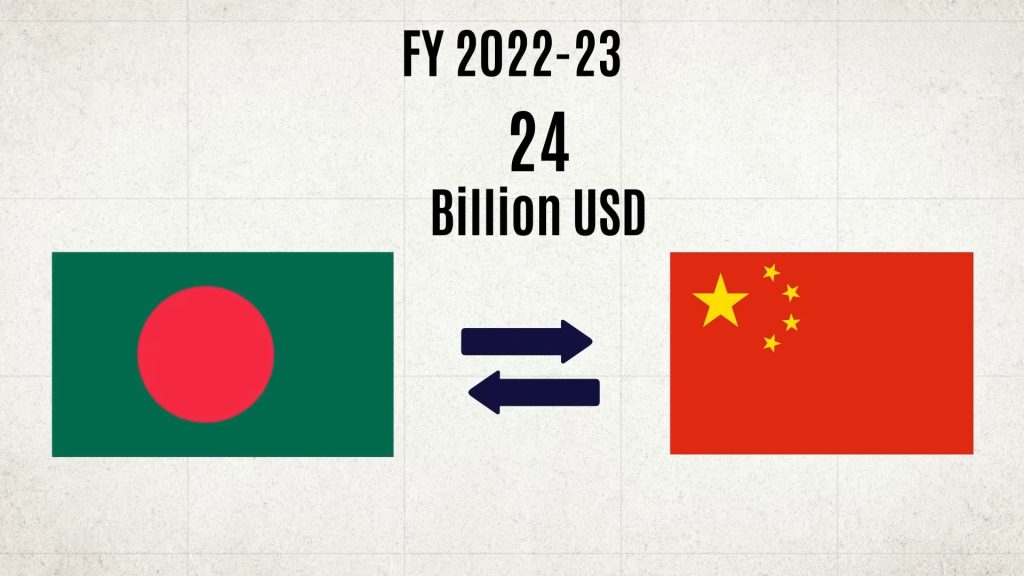
Overview
The diplomatic relationship between Bangladesh and China began in 1975 after Bangladesh gained independence. Before that, China’s then-Premier Zhou Enlai visited East Pakistan, now Bangladesh, twice in 1950 and 1956. Sheikh Mujibur Rahman, the father of the nation, visited China twice, in 1952 and 1957. Additionally, in 1957, Abdul Hamid Khan Bhashani and later the same year, Hussein Shaheed Suhrawardy, then Prime Minister of Pakistan, visited China. Since the establishment of diplomatic relations in 1975, export-import activities and investments between Bangladesh and China have gradually increased. In 1997, Power China, a Chinese company, expressed interest in investing in Bangladesh’s power generation sector, marking the beginning of increasing Chinese investments in the country.
Most recently, in October 2016, Chinese President Xi Jinping visited Bangladesh. During this visit, a Memorandum of Understanding (MoU) was signed between the two countries to enhance cooperation in investment and production capacity, which included 27 projects. After nearly 10 years, Prime Minister Sheikh Hasina is scheduled to visit China in the second week of July. During this visit, she will meet with Chinese leaders, sign several cooperation agreements, and announce major cooperation achievements. The discussions and agreements will cover China’s involvement in several upcoming projects in Bangladesh, continued duty-free tariff benefits for Bangladeshi products even after its LDC graduation in 2026, transactions in Chinese currency, China’s financial assistance to help Bangladesh meet its budget deficit, and more. This visit is significant for Bangladesh’s economic growth, as China has become one of its largest development and trade partners in recent years.
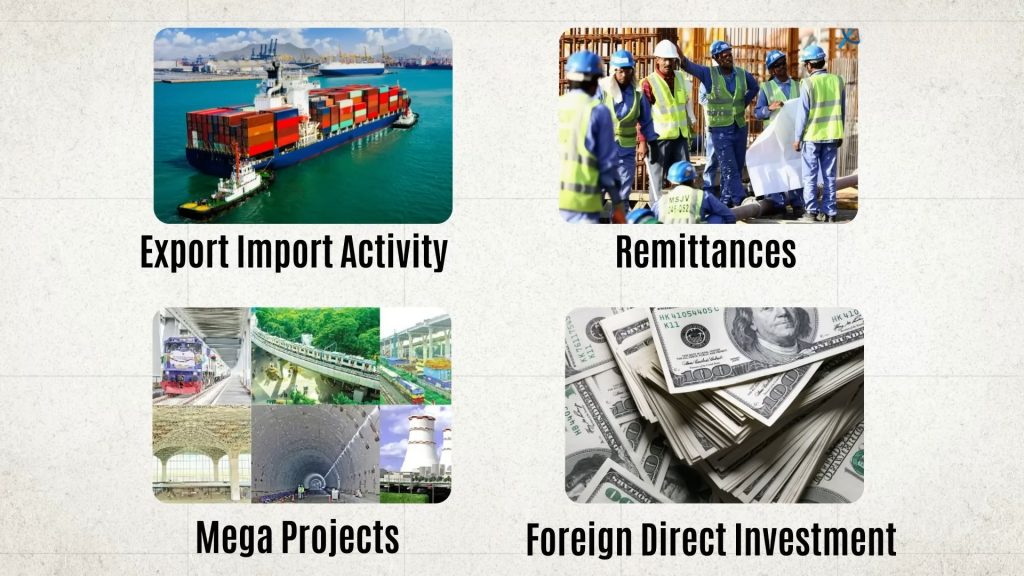
China the Largest Trade Partner
China’s most significant contribution to Bangladesh’s economic growth is in import-export trade. China has overtaken the US, UK, and India to become Bangladesh’s largest trading partner. In the fiscal year 2022-23, bilateral trade between Bangladesh and China amounted to $24 billion, accounting for more than 18% of Bangladesh’s total import-export trade. During this period, Bangladesh imported nearly $23 billion worth of goods from China, making up more than 33% of Bangladesh’s total imports and establishing China as the country’s largest source of imports. Imports from China include refined fuel, capital machinery, electrical equipment, cotton, synthetic fibers used in garment production, fabrics, raw materials for plastic, iron and steel, fertilizers, chemicals, and other essential raw materials for various industries. Companies in Bangladesh’s garment, steel, FMCG, printing and packaging, agriculture, electronics, and plastic industries import these raw materials from China to produce goods for domestic consumption or export.
Chinese imports play a crucial role in Bangladesh’s manufacturing and export trade. While Bangladesh’s exports to China are significantly lower in comparison, amounting to $677 million in the fiscal year 2022-23, Bangladeshi products exported to China include textiles and garments, jute, leather and leather products, seafood, and agricultural products. Although Bangladesh’s exports to China are significantly lower than its imports, 98% of Bangladeshi products exported to China enjoy duty-free benefits. This makes the Chinese market lucrative and full of potential for Bangladeshi producers. In the fiscal year 2010-11, the size of bilateral trade between Bangladesh and China was over $6 billion. Over the past 13 fiscal years, bilateral trade has grown at a rate of 11%, quadrupling in size. This growth has played an essential role in Bangladesh’s continuous economic growth over the past decade and a half.
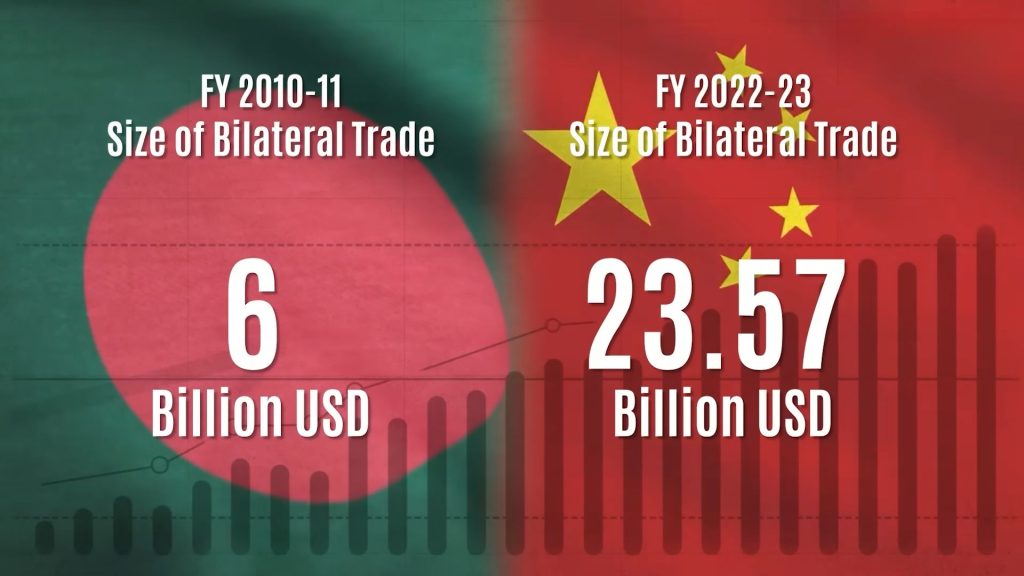
Infrastructure
China’s economic relationship with Bangladesh is not limited to bilateral trade alone. China is also a key partner in developing various infrastructure projects in Bangladesh. According to US-based International Development Research Lab AiD Data, China has financed nearly 18,000 projects in 150 countries worldwide, totalling $1.34 trillion as part of its Belt & Road Initiative (BRI). China’s investment in Bangladesh’s various infrastructure projects began in 2000. Before the official launch of the BRI initiative in 2013, China had already provided financing and loans for several significant construction projects in Bangladesh. These include the Bangabandhu International Conference Center, formerly known as the China Friendship Conference Center, which was inaugurated in 2002. Other projects include fertilizer plants, the Barapukuria coal-fired power plant, the Karnaphuli Paper Mill, and various bridge and road construction projects. According to Aid Data, China has invested nearly $21 billion in 138 projects in Bangladesh from 2000 to the present.
Additionally, according to the American Enterprise Institute, Chinese investments in various construction projects in Bangladesh since 2009 have amounted to nearly $24 billion. Most of the Chinese infrastructure projects in Bangladesh after 2013 have been under the BRI initiative. These include the Padma Multipurpose Bridge, which was constructed by a Chinese company, and the Padma Rail Link Project, which was financed by a Chinese concessional loan. These two projects have, for the first time since independence, directly connected the southern districts of Bangladesh and the Payra and Mongla seaports to the capital, Dhaka, via rail and road with shorter distances. Another significant project under the BRI initiative is the 1,320 MW thermal power plant at Payra, which is crucial for meeting the electricity demand in southern Bangladesh. Other major projects include the Dhaka-Ashulia Elevated Expressway, the Bangabandhu Tunnel in Chittagong, two 1,320 MW power plants in Maheshkhali, and the Dasherkandi Sewage Treatment Plant.
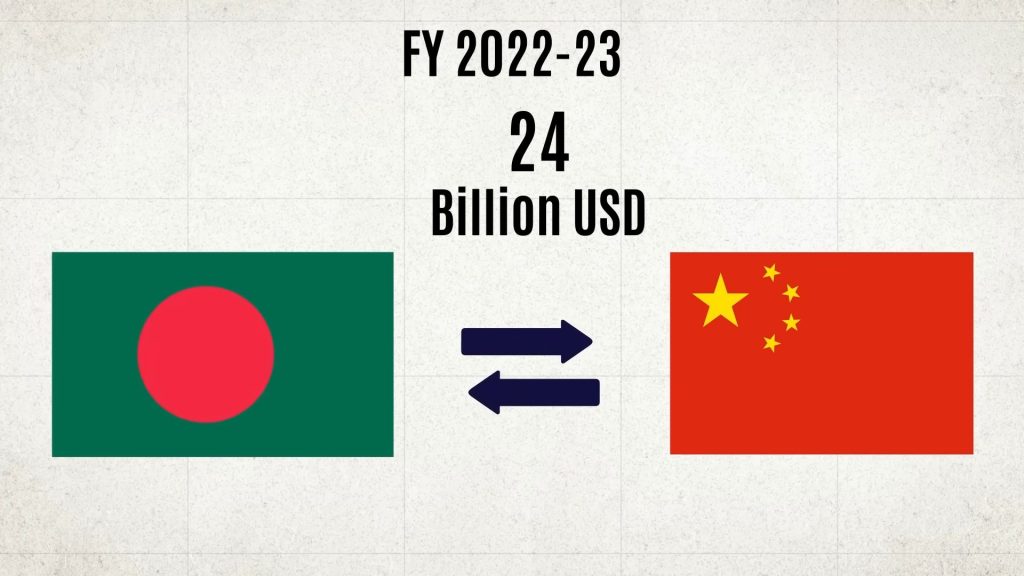
In addition to transportation, electricity, and public amenities, China has also invested in ICT infrastructure development, modernization of telecommunication networks, and the establishment of a Tier-4 data center in Bangladesh under the BRI initiative. To date, China has invested in 21 bridges and 27 power projects in Bangladesh under the BRI initiative. According to the American Enterprise Institute, Chinese investments in Bangladesh under the BRI initiative amount to approximately $7.07 billion. Furthermore, outside the BRI initiative, China has also invested in Bangladesh’s first joint venture for the Dhaka Elevated Expressway under a public-private partnership. Skilled Chinese workers are working alongside Bangladeshi workers on these projects, creating new employment opportunities in Bangladesh and allowing the country to benefit from knowledge transfer in such critical projects.
Foreign Direct Investment
In addition to financing infrastructure projects, Chinese state-owned and private companies have been making significant foreign direct investments (FDI) in Bangladesh for the past few years. For major global economies like the US, UK, India, and Germany, as well as smaller nations like Singapore, FDI is a crucial element for economic growth. Historically, the largest FDIs in Bangladesh have come from the US and UK. However, in recent years, Chinese investments in Bangladesh have been steadily increasing, surpassing those from the US and UK to take the top spot. Several joint ventures between local and Chinese companies have already been established in Bangladesh. According to a report by Spain’s University of Navarra, Chinese state-owned and private companies invested around $26 billion in Bangladesh between 2016 and 2022. Notably, in 2022 alone, Bangladesh received $1 billion in FDI from China, which was about 30% more than the $700 million invested in 2021, making China the largest source of FDI for Bangladesh that year.
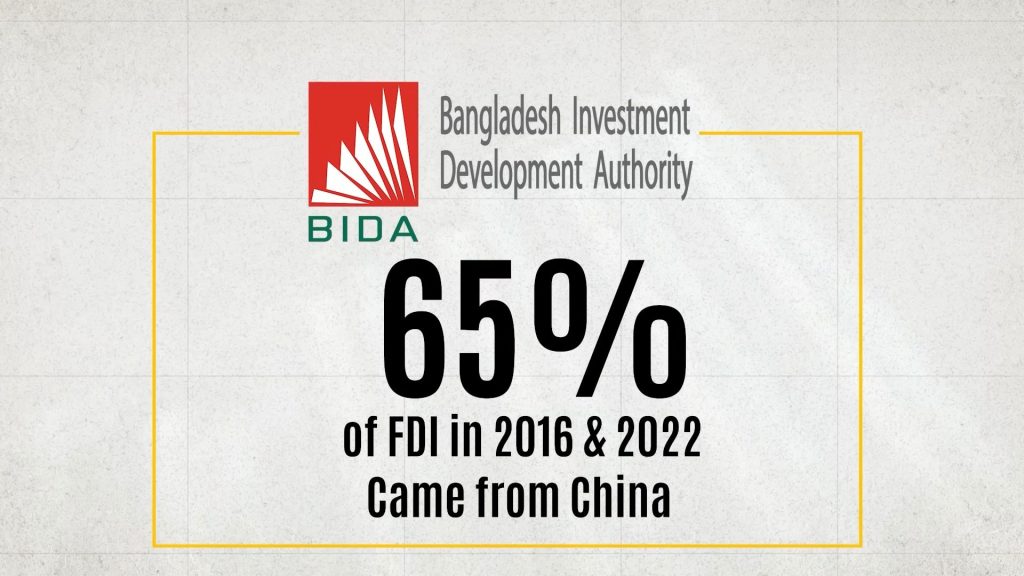
According to the Bangladesh Investment Development Authority, 65% of Bangladesh’s total foreign investment in that year came from China. Additionally, according to TBS News, approximately 25% of investments in Bangladesh’s Export Processing Zones (EPZs) are from Chinese companies. Over 670 Chinese companies are currently operating in various sectors in Bangladesh, creating nearly 600,000 job opportunities. According to the Bangladesh Investment Development Authority (BIDA), Chinese companies have submitted proposals for an additional $1.5 billion in investments in 2022. To accommodate this growing interest from Chinese investors, the Bangladeshi government is establishing a special economic zone on 783 acres of land in Anwara Upazila, Chittagong, which is expected to create another 200,000 jobs.
Financial Assistance
In addition to FDI, Chinese investments in Bangladesh also include financial assistance, particularly for most Belt & Road Initiative (BRI) projects, which are funded through various financial aids provided by China. Although Bangladesh’s economic relationship with China has often been questioned by both domestic and international observers, a review of Bangladesh’s overall debt position suggests that this financial assistance from China has had a positive impact on the country’s economy. When analyzing the financial assistance received by any country, it’s important to first examine the sources, sectors, and terms and conditions of the assistance and whether this information is publicly available. All the information regarding the investments provided by China to Bangladesh is publicly accessible.
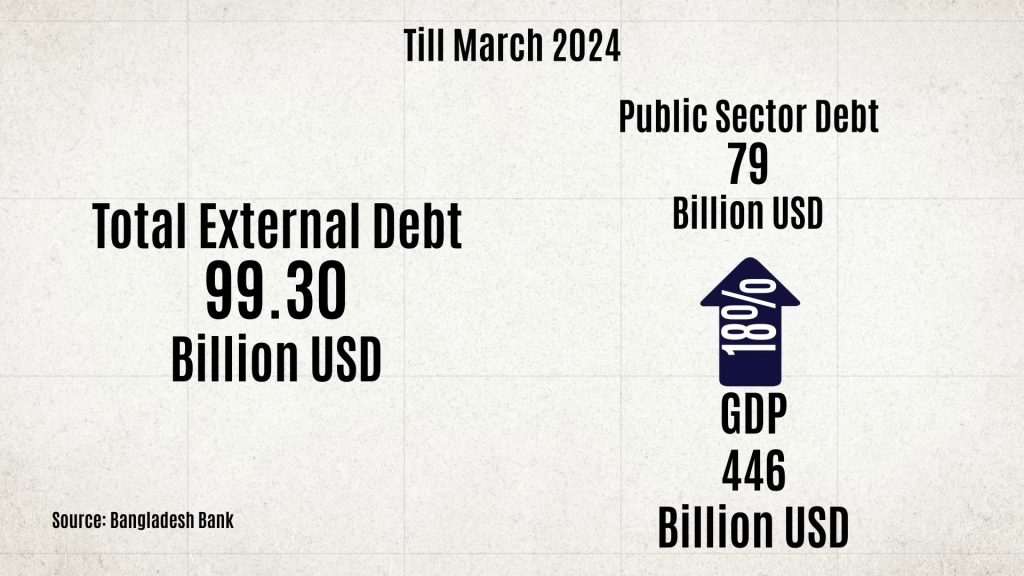
In fact, according to a US-based research lab, Bangladesh has no hidden debt with China, which indicates the positive nature of the economic relationship between the two countries. Next, it is essential to evaluate how well Bangladesh manages its loans. According to Bangladesh Bank, as of March 2024, Bangladesh’s total external debt stood at $99.30 billion, with public sector debt accounting for $79 billion, or approximately 18% of Bangladesh’s $446 billion GDP. The IMF recommends that a country’s external debt should remain below 55% of GDP. Therefore, in terms of external debt, Bangladesh’s position is quite favorable according to IMF recommendations. A report by Bangladesh’s Economic Relations Division indicates that the largest share of loans taken for development projects in Bangladesh comes from the World Bank, which accounts for 31% of public sector external debt. Loans from ADB and Japan make up 23% and 17%, respectively. Meanwhile, loans from China account for only 9% of Bangladesh’s public sector external debt, placing China fourth in Bangladesh’s external debt portfolio. Considering these factors, there is no reason to question China’s financial assistance to Bangladesh, and it is clear that this assistance has played a crucial role in completing various mega-projects and contributing to overall economic growth in Bangladesh.










Leave a Comment